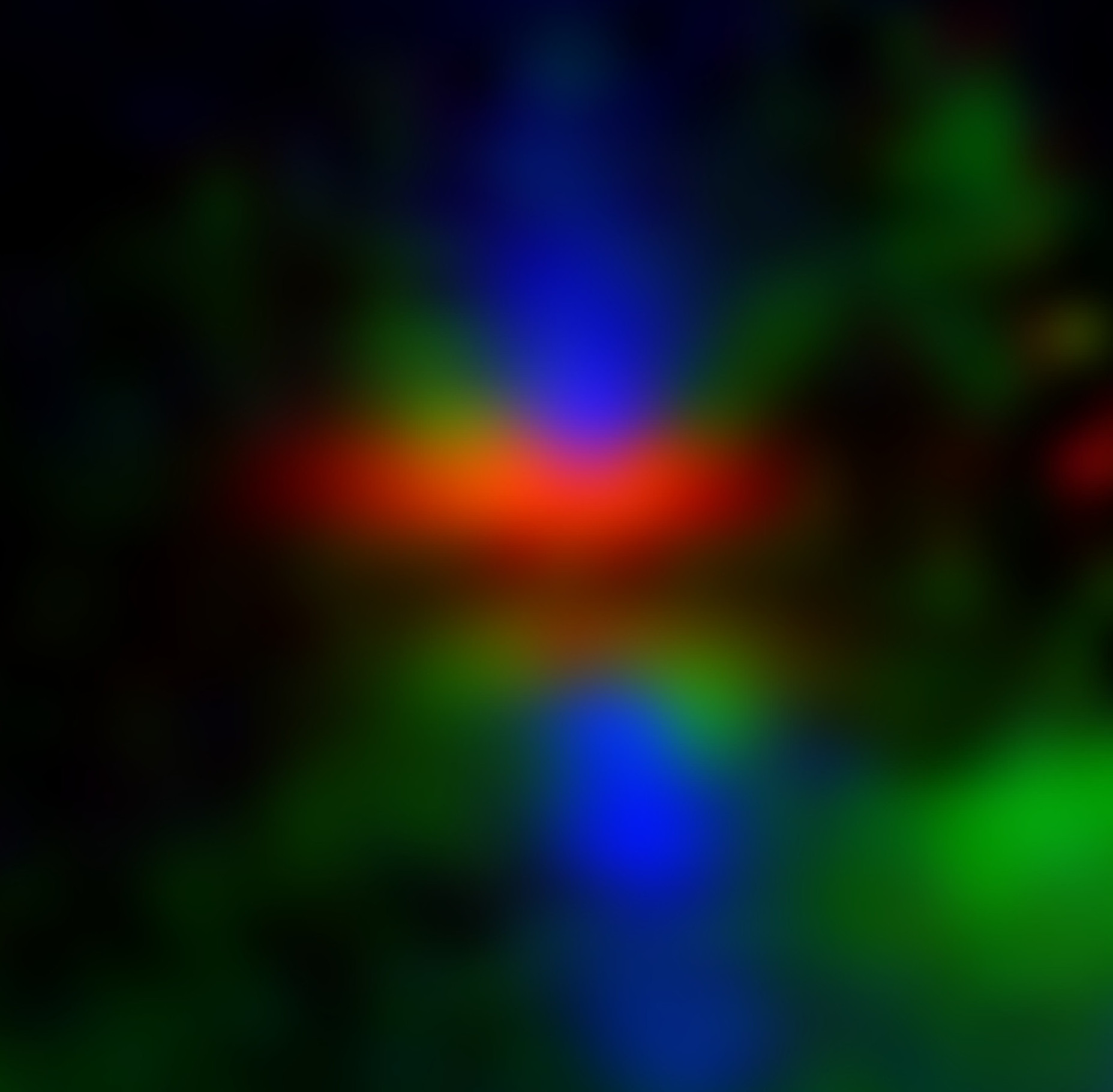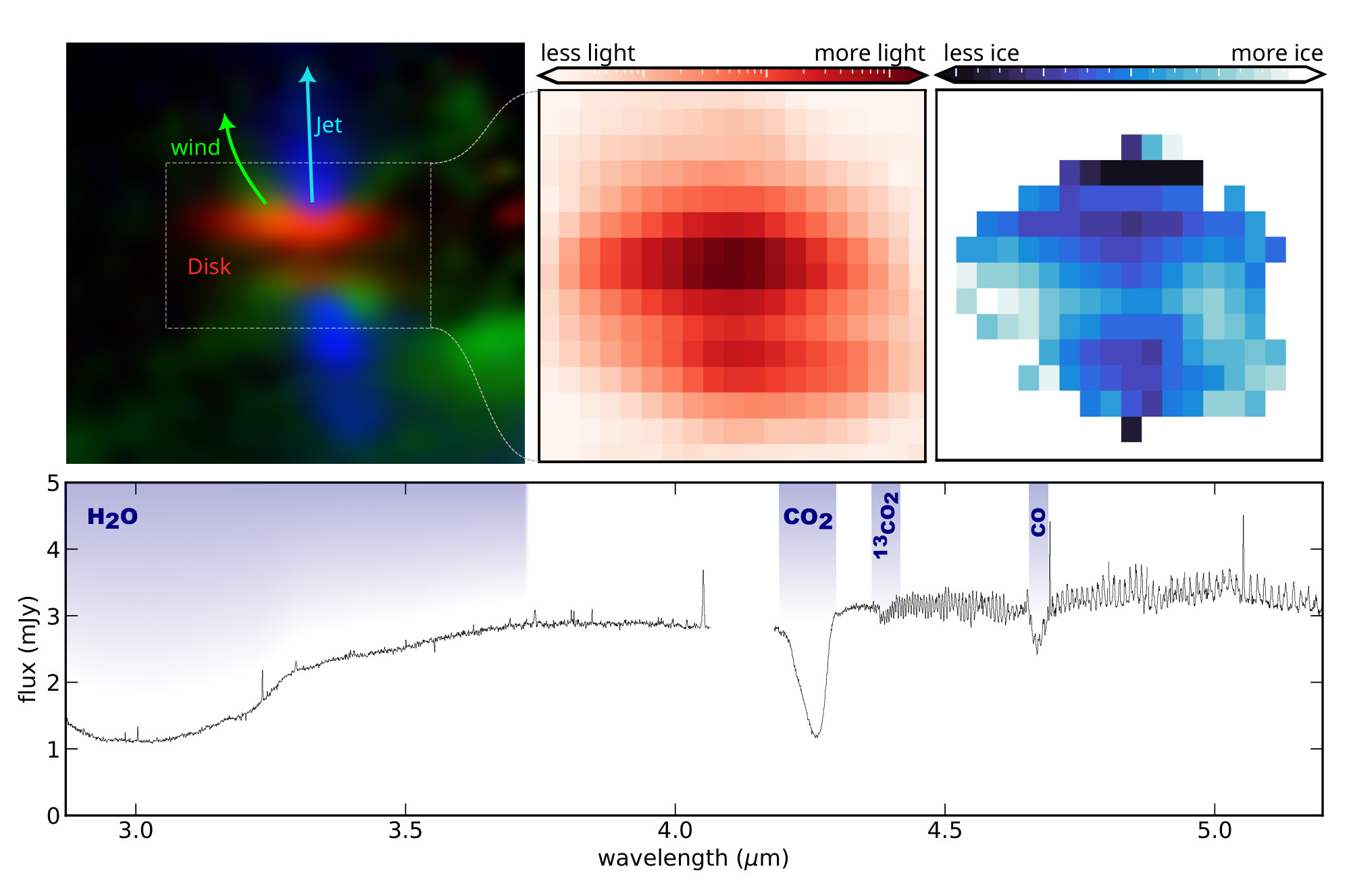The James Webb Space Telescope sent detailed photos of the “hamburger” from the protoplanetary disk surrounding the young star. Based on the information received, it was possible to create a detailed 2D map of the distribution of water ice in this disk. It is believed that the Solar System looked like this 4.5 billion years ago. Ice in protoplanetary disks is key to the formation of planets and comets, and may also contain important molecules for life.

“The direct mapping of ice in a planet-forming disk provides important input for modeling studies that help to better understand the formation of our Earth, other planets in our Solar System and around other stars,” said Ardjan Sturm, lead author of the study at Leiden University.
It has always been difficult for scientists to obtain important data on the distribution of ice in protoplanetary disks due to two serious obstacles: the Earth’s atmosphere and low-sensitivity instruments on board orbital observatories. James Webb, worth USD 10 billion, made it possible for the first time to obtain the necessary information thanks to the ultra-sensitive infrared “vision” of the MIRI device. A team of Ice Age researchers used a telescope to observe the young star HH 48 NE, located about 600 light-years away from us.

The orientation of the protoplanetary disk with its edge towards us allowed scientists to see the “space burger” illuminated from the inside by the central star. When its light passed through the disk, it interacted with molecules, leaving spectral “prints” that James Webb caught.
So astronomers discovered ammonia, cyanate, carbonyl sulfide and heavy carbon dioxide in the form of ice. This made it possible to calculate the ratio of heavy carbon dioxide ice to ordinary water ice, given that water molecules are the most common on Earth.
The results of the Ice Age JWST project were received at the end of 2023. The team plans to observe other protoplanetary disks to see if they retain the same proportions of different types of ice. Additional research may force scientists to change their ideas about the composition and formation of planets.
Earlier, we reported on how scientists got confused about three candidates for the role of the largest exoplanet.
According to space.com
Follow us on Twitter to get the most interesting space news in time
https://twitter.com/ust_magazine


